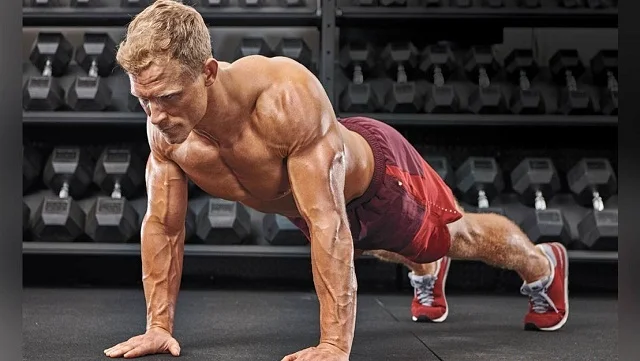 |
| Use Ideal Form When Performing These 5 Exercises |
Using proper form when performing any exercise is as important for making progress as it is for preventing injury because getting hurt when exercising can be a huge setback and cost you all of your hard work. Since different people have different advantages and flaws in terms of body composition, it’s up to everyone to find their own ideal positioning within each movement.
Still, there are some exercises that don’t allow a lot of room for experimentation and you’d be better off maintaining ideal by-the-book posture while performing them in order to avoid painful injury. Here’s the list:
1. BARBELL SQUAT.
Barbell squats are excellent for strengthening your back, legs, hips and butt. However, your back and knees are especially vulnerably to injury during this exercise. Proper body mechanic can help prevent injury and keep you safe.
When you begin, make sure to place the bar on a portion of your trapezius where you feel comfortable. Lower yourself down in a slow and controlled manner and keep your head up slightly with eyes fixated on a point on the wall in front of you. Most important of all, keep your back straight all throughout the movement.
2. BENCH PRESS
This means that before adding the bench press to your regular routine, you should make sure your shoulders are strong and flexible enough to successfully support this movement.
To further protect your shoulders, arch the lower back, raise the rib cage and shrug the shoulders down and back into the bench. With a shoulder-width grip on the bar, start lowering it slowly, then carefully push it back up in an explosive manner with the help of your pecs, anterior delts and triceps.
3. LEG PRESS
To obtain proper form for the leg press, place your feet about shoulder width apart with toes pointing slightly out. At the bottom part of the movement, the feet should be in line with the knees. Make sure to keep the torso tightly locked in place and don’t let your neck push forward. When you push, utilize the glutes, hips and thighs to power the movement.
Read More: Deadlift Variations To Achieve A Banging Body!
↚
4. DEADLIFT
Deadlifts can help you build a Herculean back musculature or they can cause you great pain. One of the common causes for injury when deadlifting is a rounded lower back that compresses the spinal discs from the front, resulting with herniated disk. Also, if your hips are too high and your legs are almost straight, the hips and lower back have to work a lot harder since your knees can’t help with the lift, which further increases lower back stress.
With the deadlift, it’s best to keep your lower back neutral and the bar close to you with either a double overhand grip or a over/under grip combination. Note that if you choose the under/over grip, you would benefit the most from switching hands on each set to avoid over-stressing the biceps. The feet should be placed firmly on the ground about shoulder-width apart or slightly wider.
Bend the knees to 90 degrees and bend the hips until the torso becomes parallel to the ground. To lift the bar, contract the quads, glutes, hips and lower back and power the movement through the feet. Then, to straighten the torso, thrust the hips forward, tighten the glutes, lift the traps and finally retract the shoulder blades. As you lower the weight back to the ground, do it carefully and slowly and don’t bounce the bar off the ground.
5. BARBELL UPRIGHT ROW
It’s advisable to simply avoid it altogether and instead use dumbbell presses, military presses and side dumbbell raises to develop your shoulders and traps. However, if you’re determined to perform it, take some steps to maximize the safety of your effort. Grab the bar with a grip slightly wider than shoulder width (targeting the delts) or a grip slightly narrower than shoulder width (targeting the middle trap muscles). Make sure that you’re not raising the bar too quickly and/or too high.
Keeping a slight bend in the knees and a tight lower back, slowly lift the bar, raising your elbows up and to the side and keeping the bar close to your body. The torso should be kept stationary and the elbows should always be higher than the forearms. Continue to lift until the bar touches your chin.
